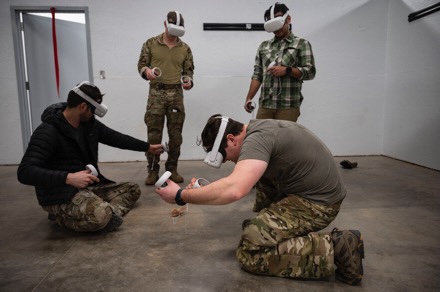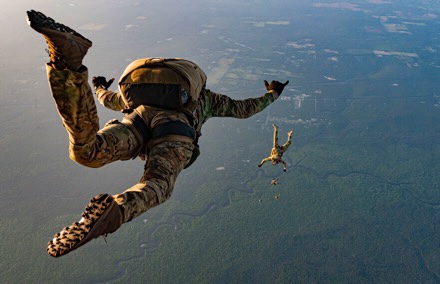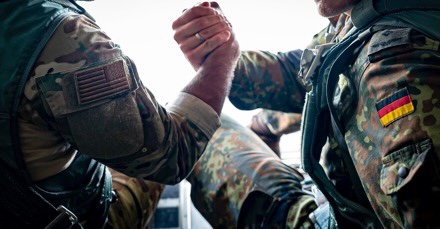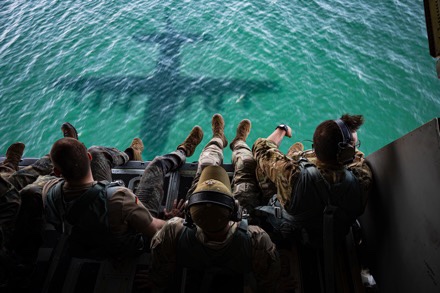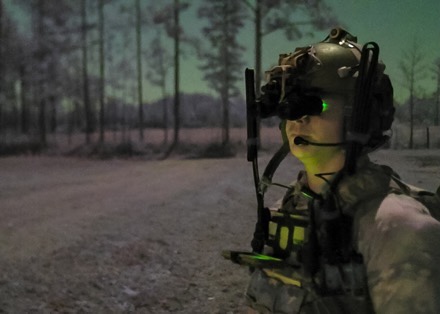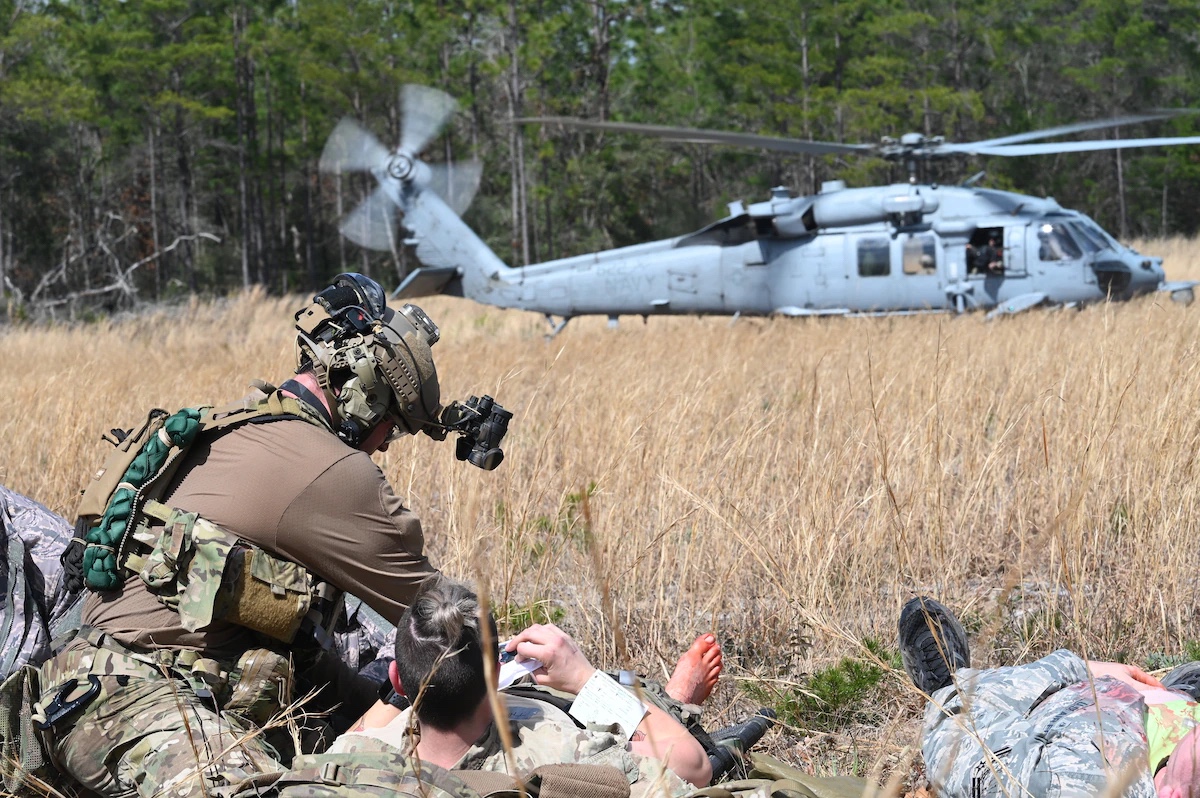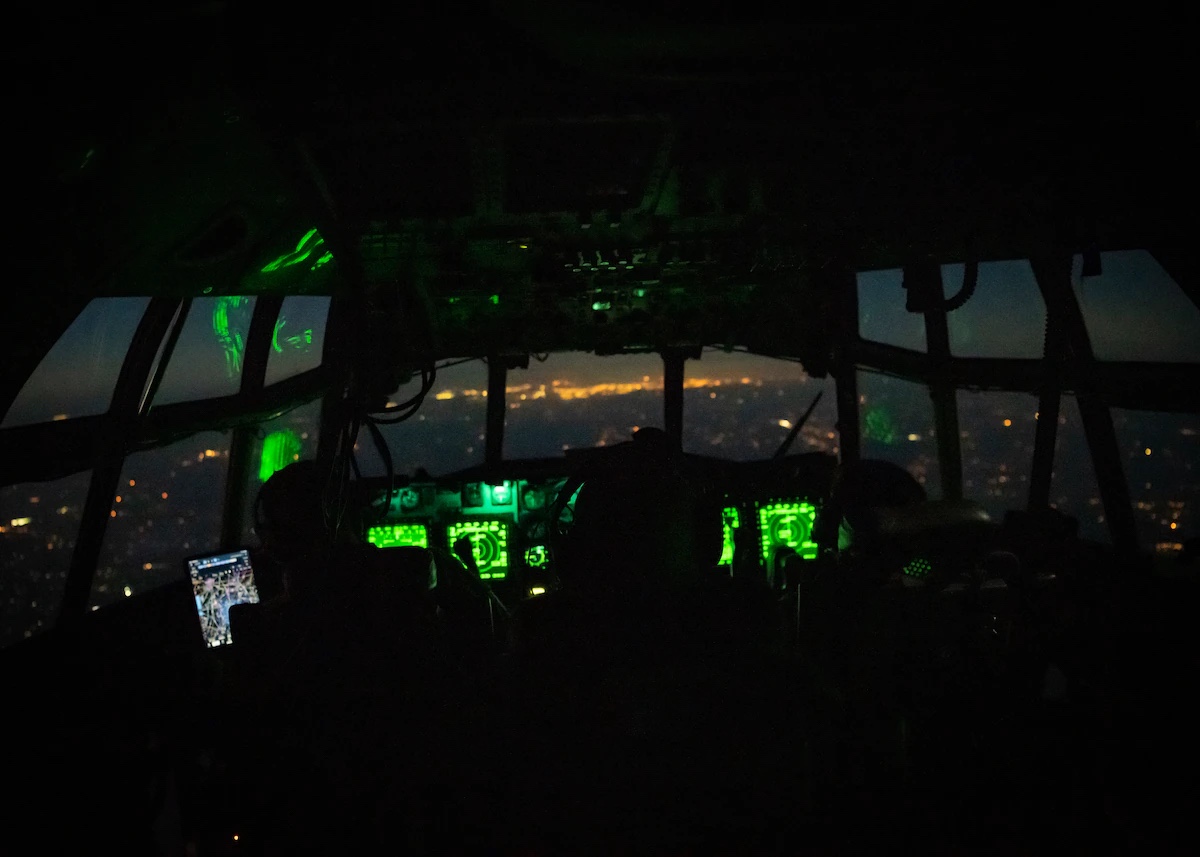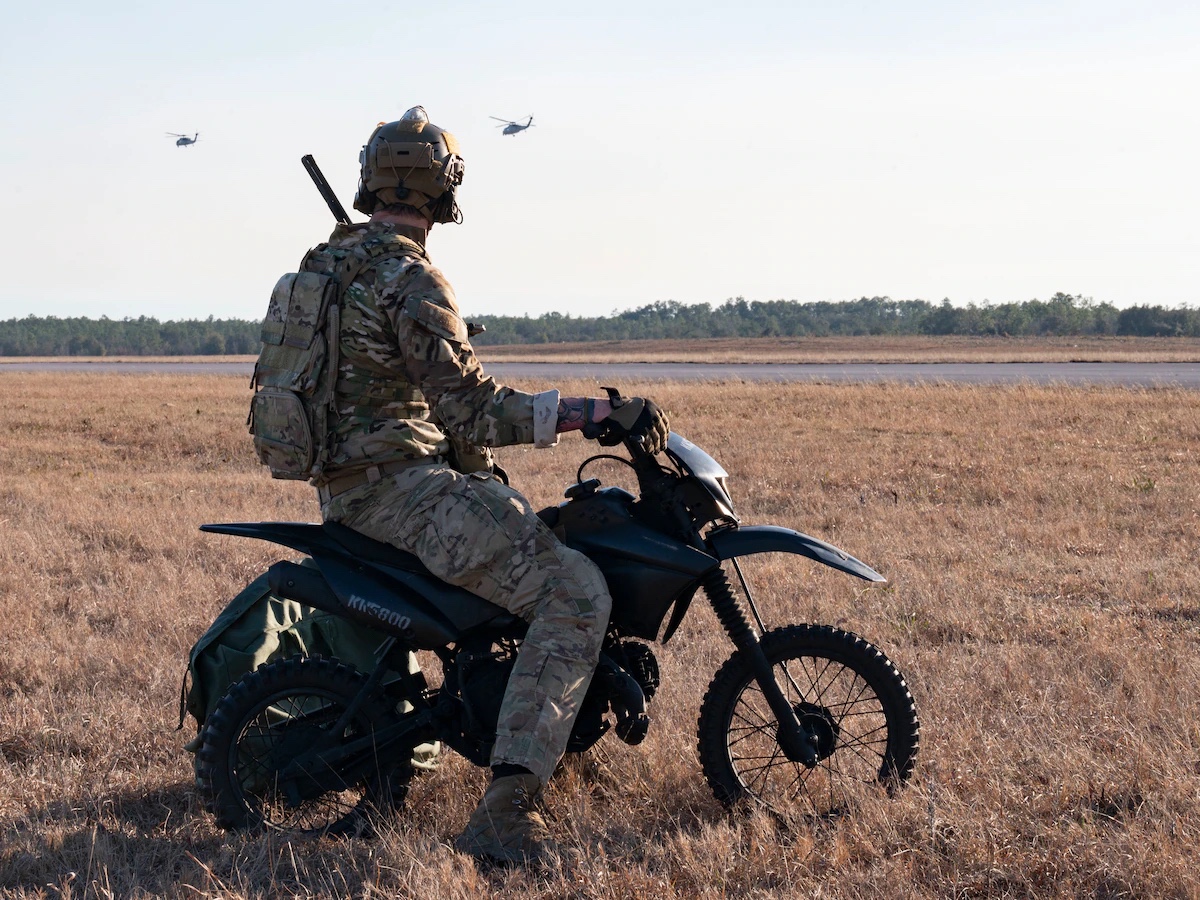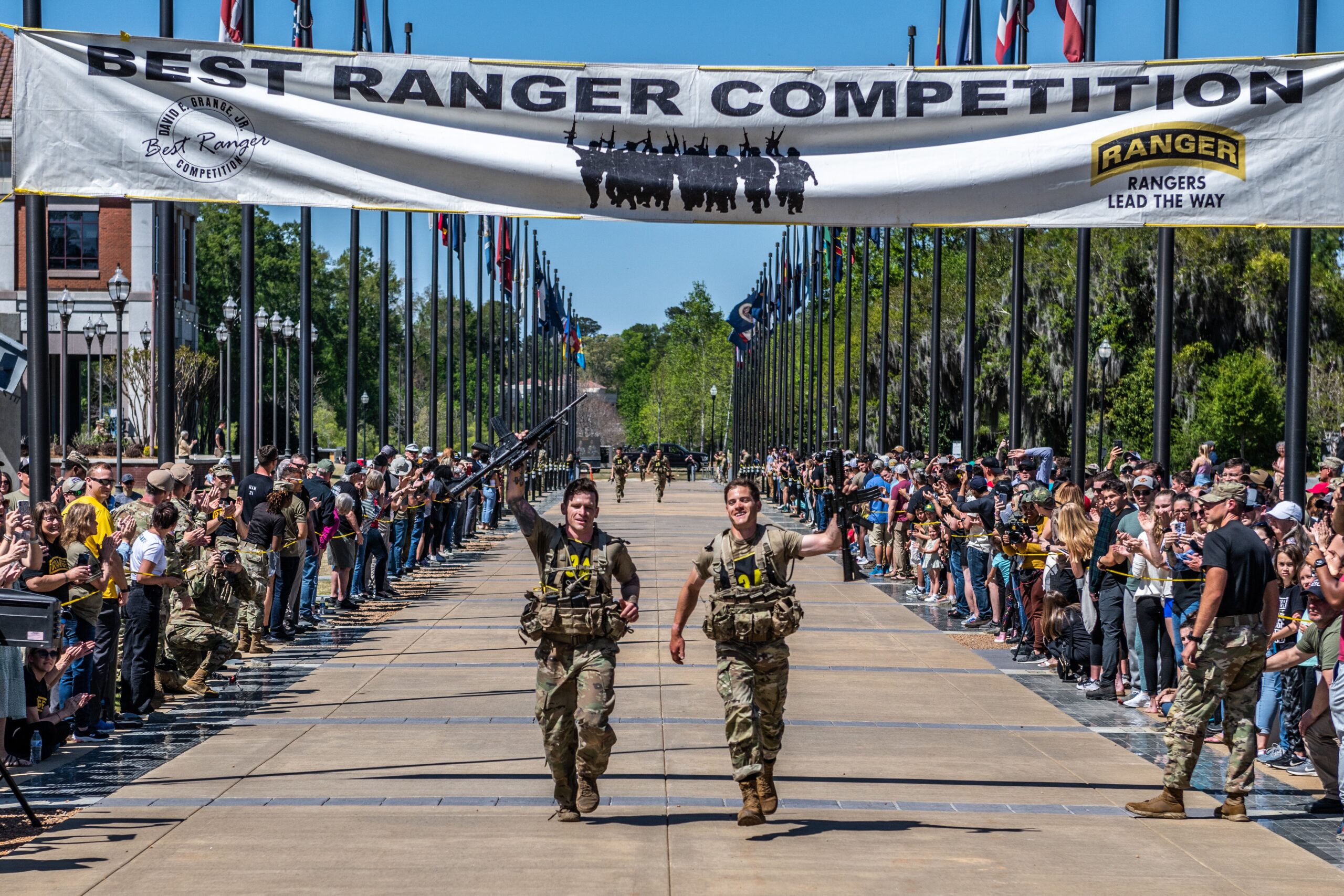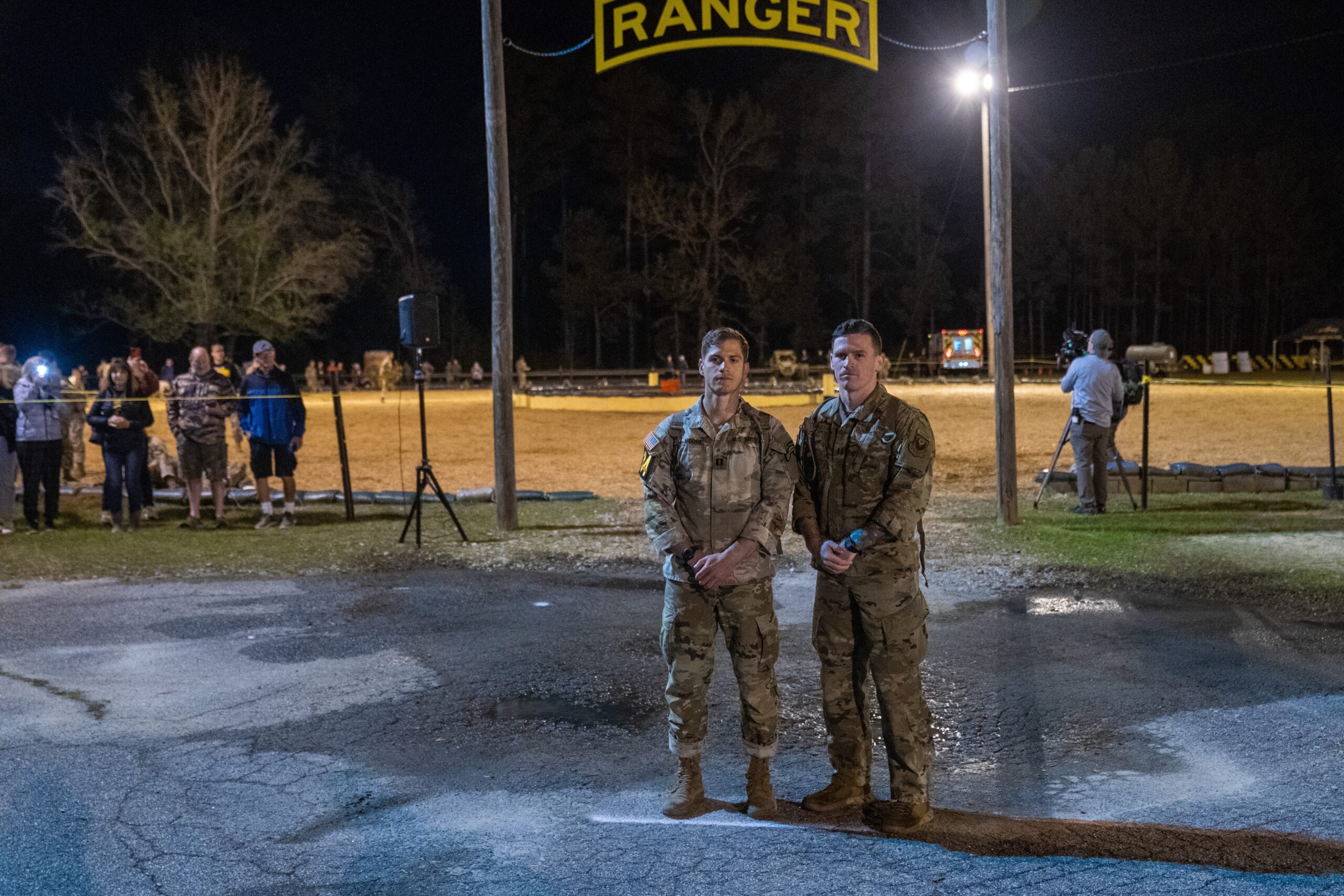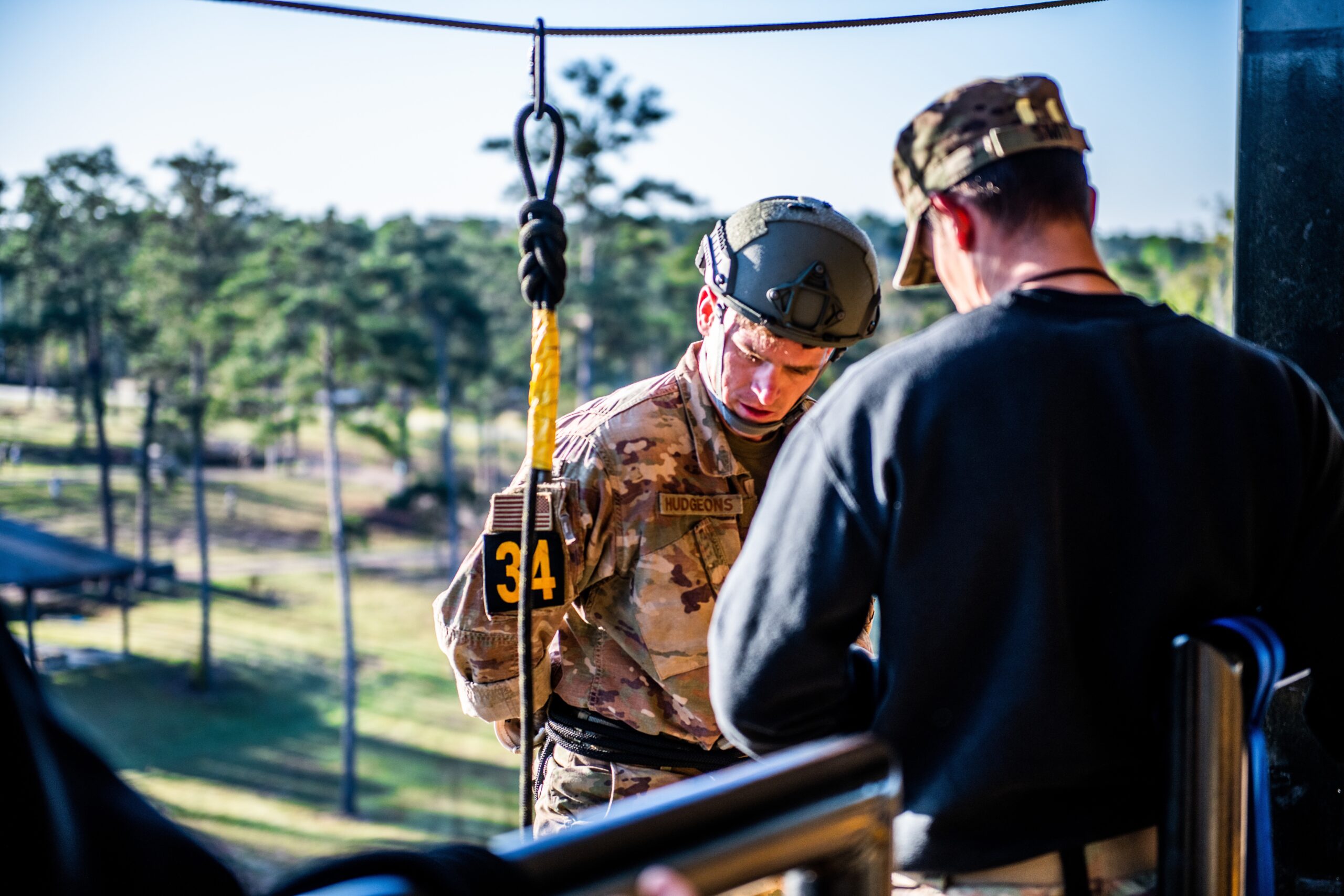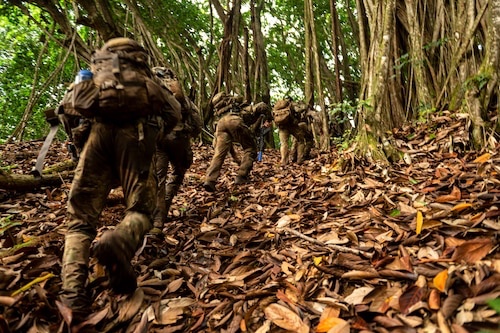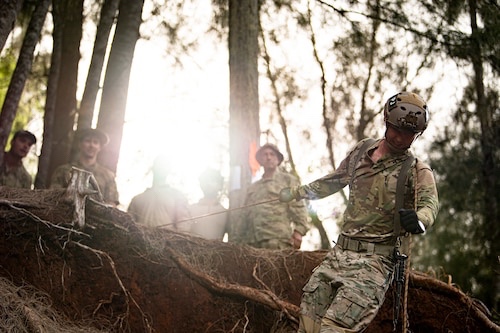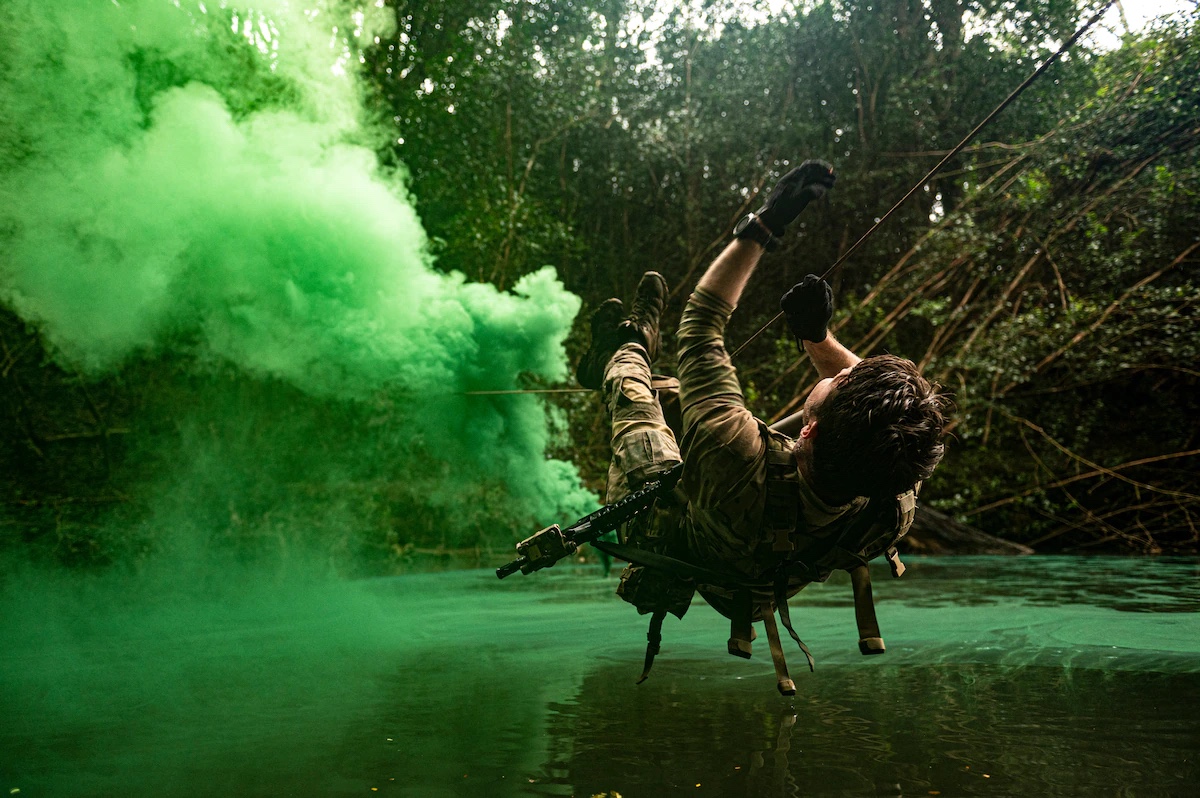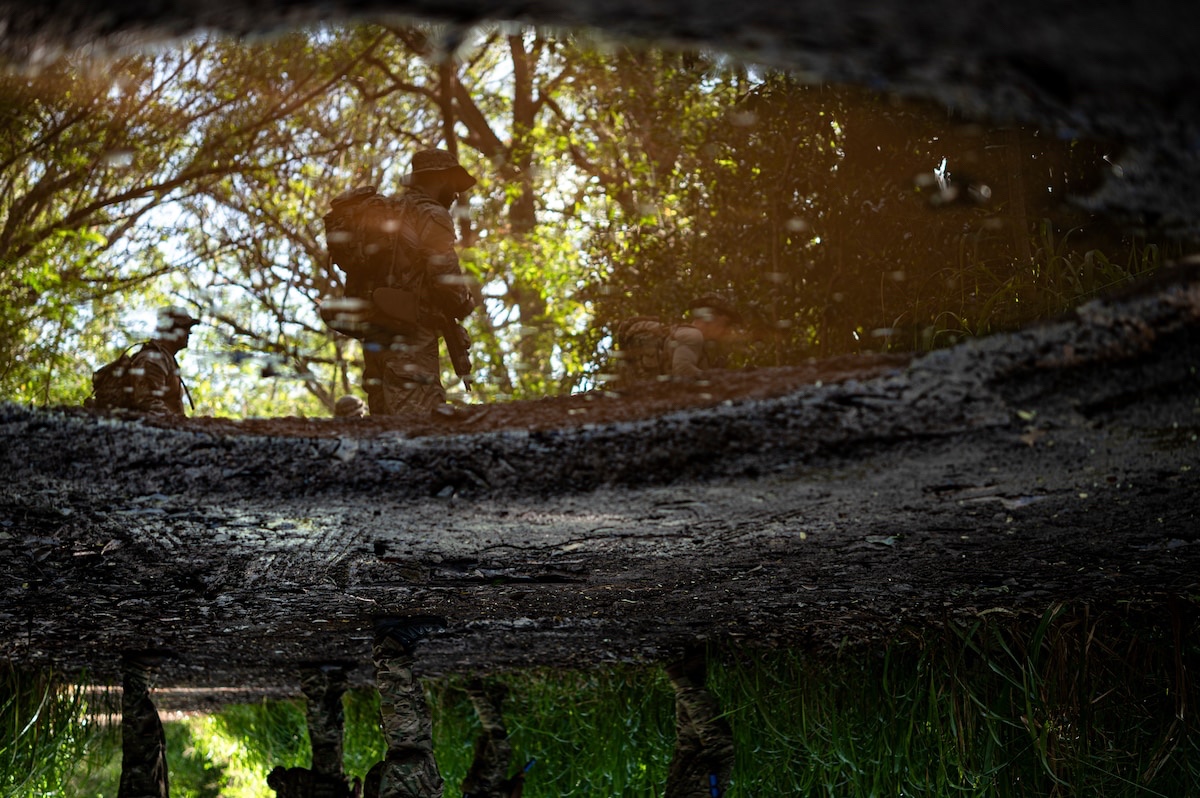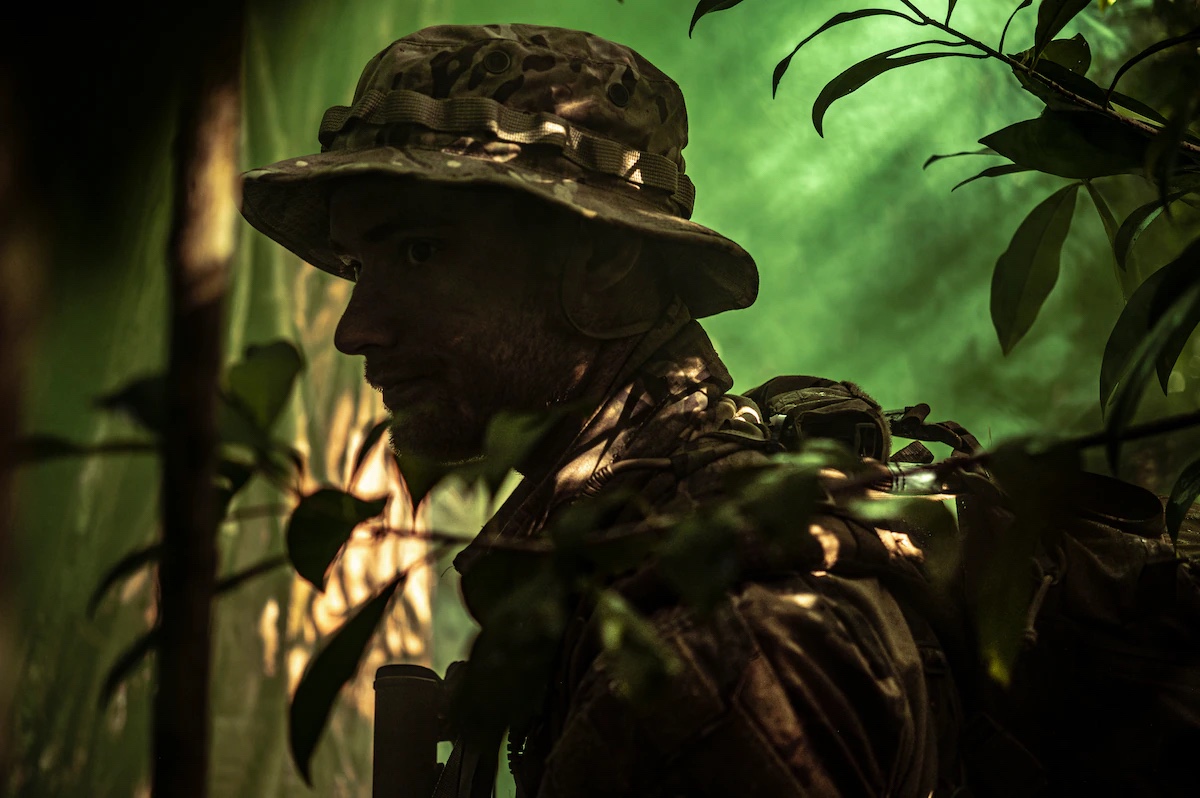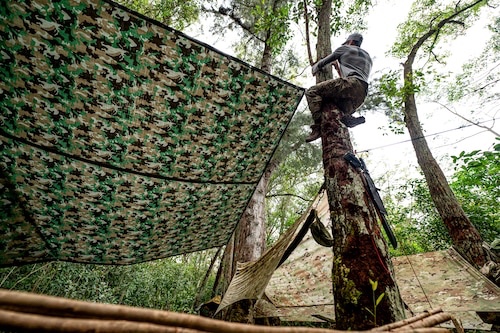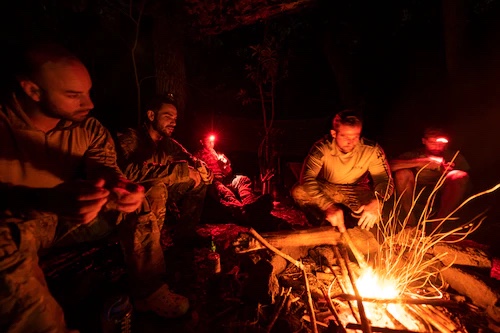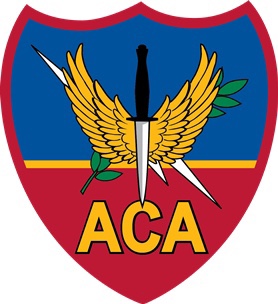WILL ROGERS AIR NATIONAL GUARD BASE, Okla. —
The 137th Combat Training Flight (CTF) hosted its first female student in the joint terminal attack controller qualification course (JTAC QC).
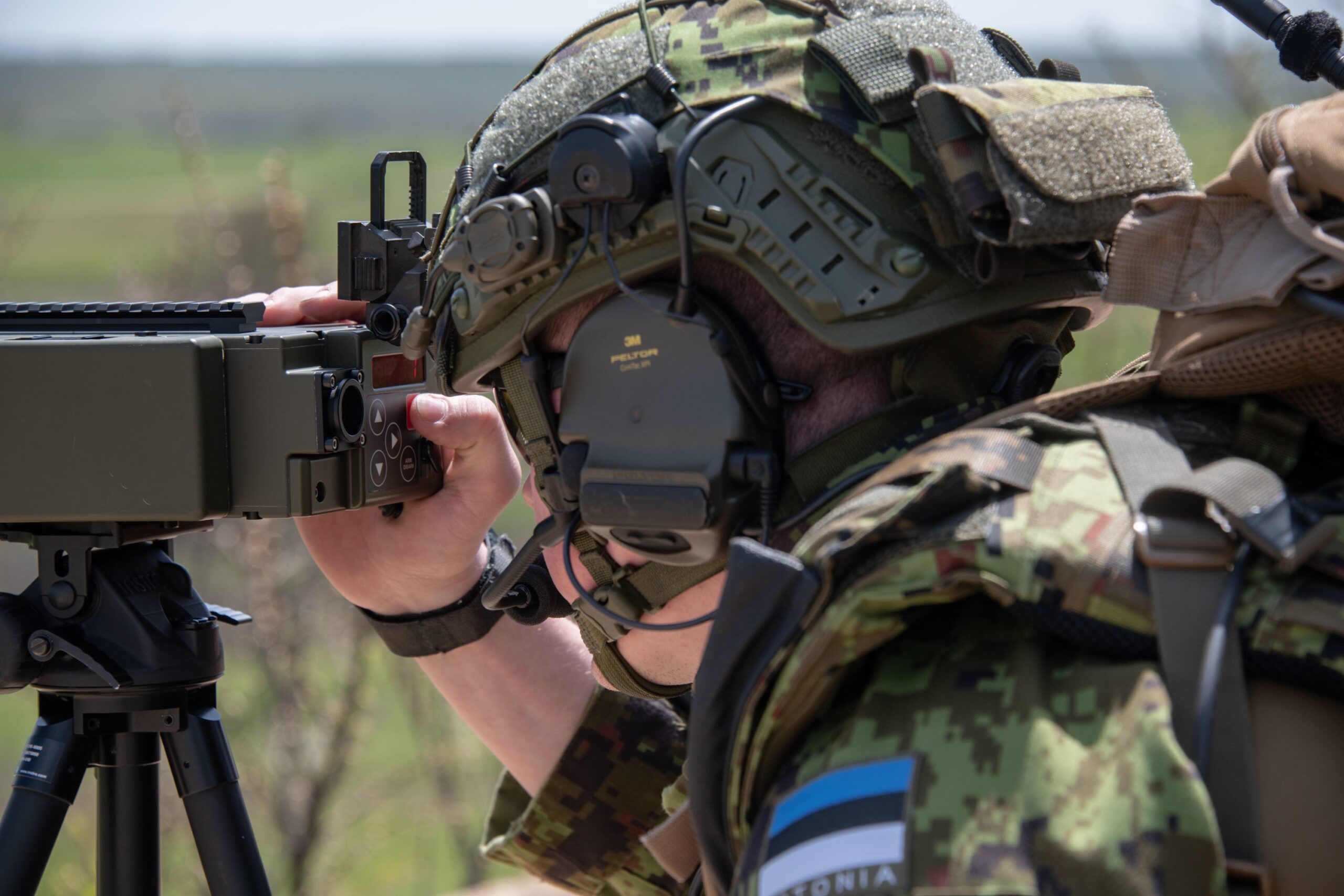
The course, held March 21-April 22, 2022, in Oklahoma City, included two NATO students, an Estonian tactical air control party specialist and a German Air Liaison Officer, who was the first female participant in the 137th CTF JTAC QC.
“I enjoy the spectrum of coalition students we get through here because each one is a very different dynamic for instruction. Some are already trained, and for others it’s their first time passing a 9-line,” said Tech. Sgt. Justin Davis, 137th CTF instructor. “Our students essentially get seven or more full mission profiles in our simulator and three full mission profiles with live contract close air support (CAS) during our field week.”
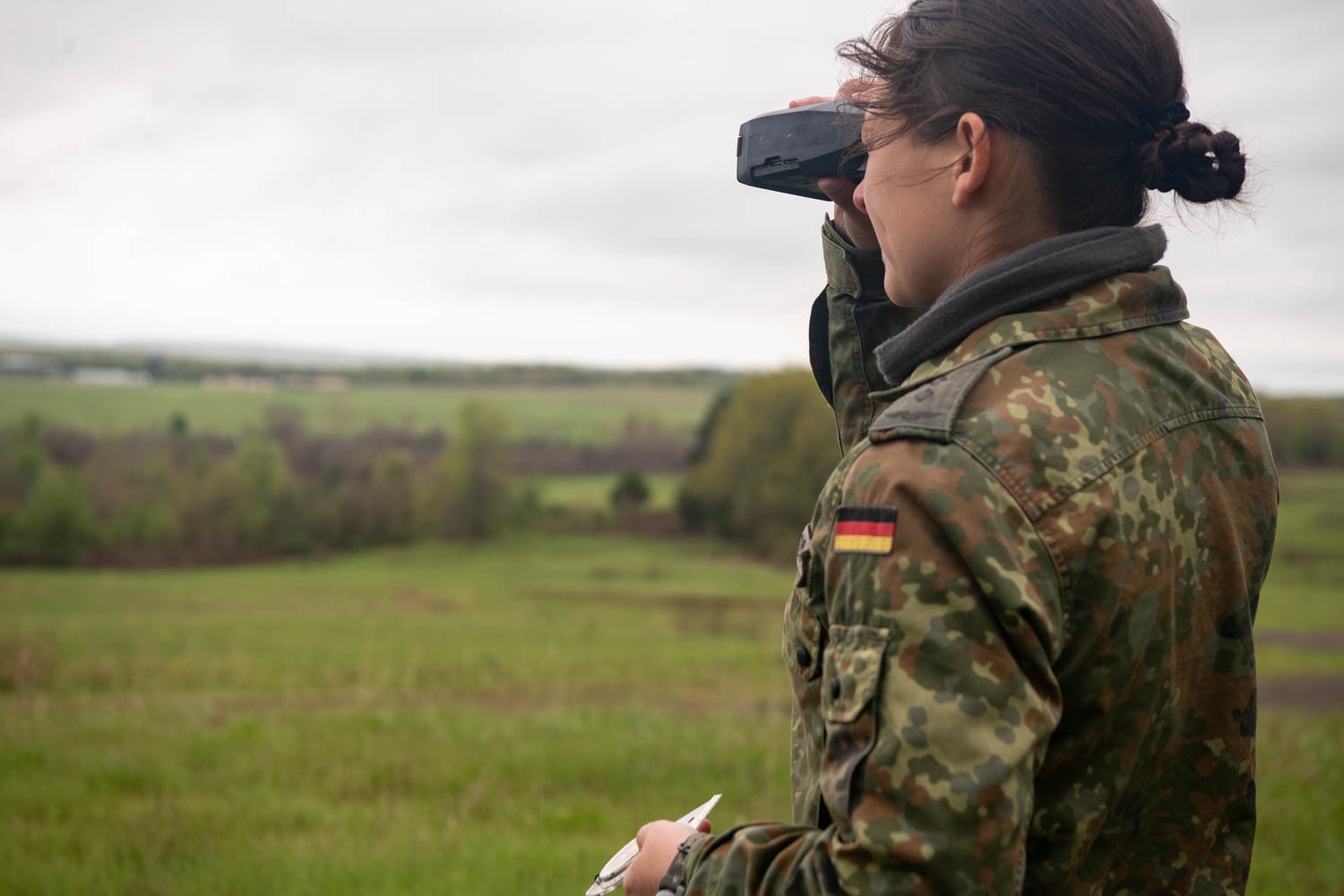
Students go through three phases within the course over five weeks: two weeks of academics, two weeks simulator testing command and control skills in the Advanced Joint Terminal Attack Controller Training System (AAJTS), and field training that consists of daytime and nighttime calls for fire on a training range with contracted CAS aircraft.
“The contract CAS piece makes a big difference in training because it doesn’t have the same flight time restrictions as working with military aircraft,” said Davis. “Students have triple the time, in addition to in-depth instruction in the simulator where we can start and stop scenarios to adjust as needed. All that being said, I don’t know that there’s any one thing in particular that we’re doing right, but I know it’s the combination of things we’re doing right that initially brought NATO coalition partners here and why they continue to send students.”
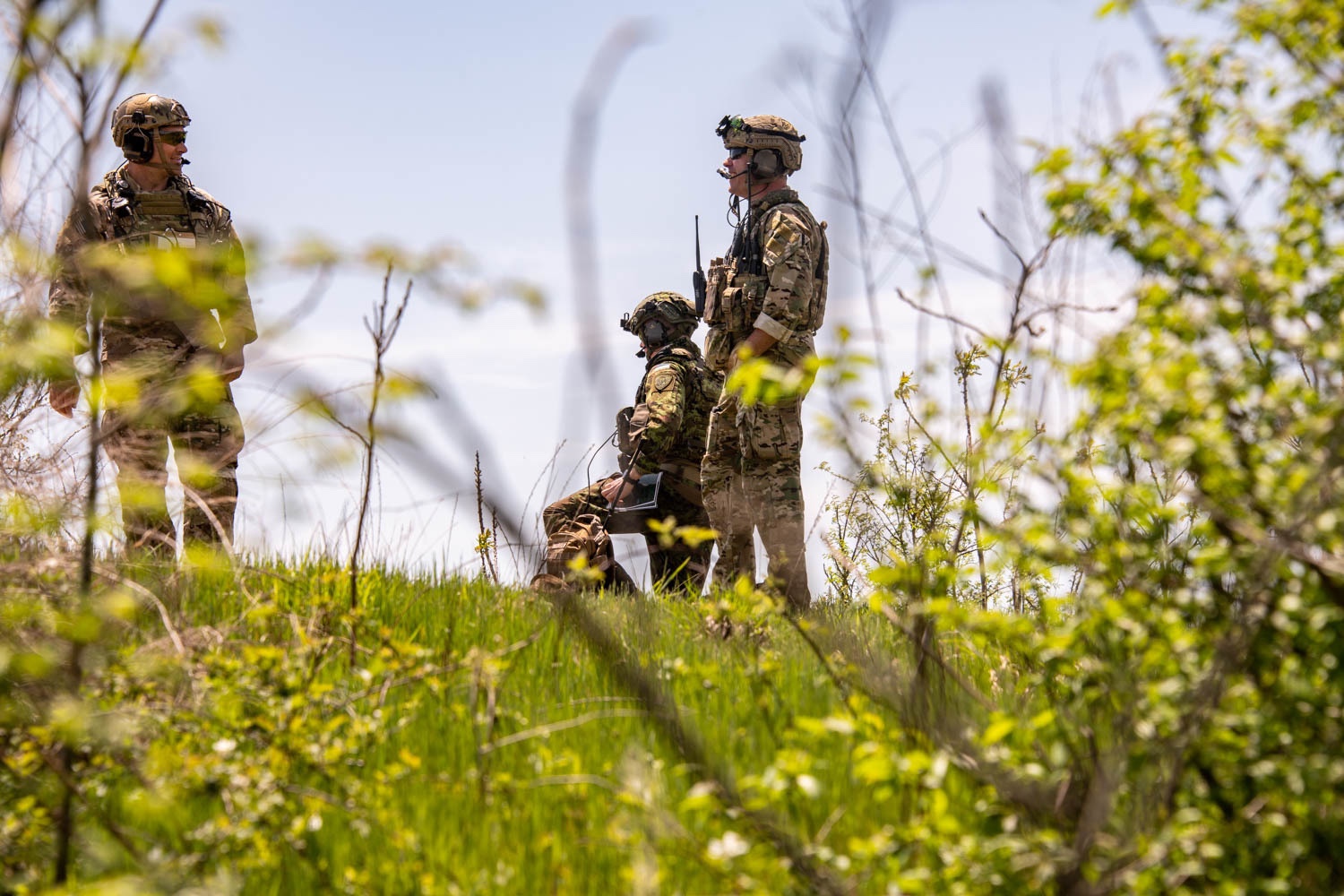
The 137th CTF is one of two schoolhouses in the U.S. able to qualify JTACs and is one of three in the U.S. Air Force. Since 2016, the 137th CTF has hosted students from every U.S. military branch and a dozen NATO partner nations. It is unique as a schoolhouse for its manning ratio between instructors and students. Other class sizes can reach up to two dozen students with only a handful of instructors, whereas the 137th CTF class size allows for nearly a one-to-one ratio that provides time for more personalized and in-depth instruction.
“Several of our international students come here already qualified as JTACs and use our course as a stepping stone to become instructors back home,” said Maj. Jeffrey Hansen, 137th CTF director of operations. “Our instructors are also better for having our coalition partners, especially those already JTAC qualified, as students because their feedback allows us to expand on our training and improve how we teach. Plus, the relationships we have built with international students have been leveraged into continuation training, such as with Estonia through the State Partnership Program.”
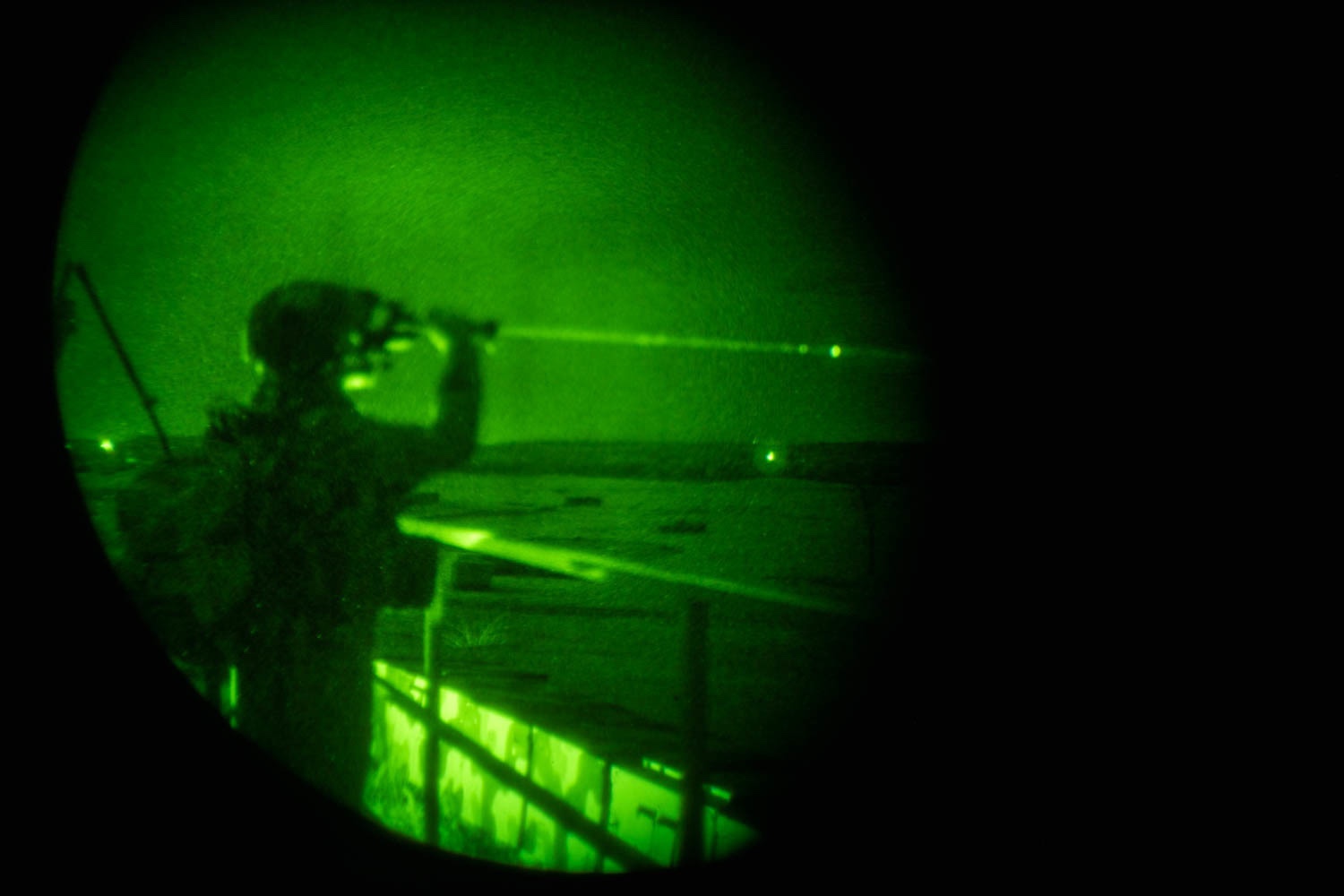
Once graduated from the course, military members have a Department of Defense certification to go into a deployed environment and conduct CAS, which is the ability to provide joint fire close air support to ground forces, with any available U.S. or NATO asset.
“When it comes to military doctrine, especially on the NATO side, it remains vague because you have to incorporate 30 countries,” Hansen noted. “CAS is different because anywhere you go in the world, we all share a language, forming an intense bond. The diversity of our classes and the bonds we form with all of the students who have come through demonstrates firsthand that our shared language forges a connection that transcends any differences between branch of service or nation of service.”
By TSgt Brigette Waltermire
137th Special Operations Wing


